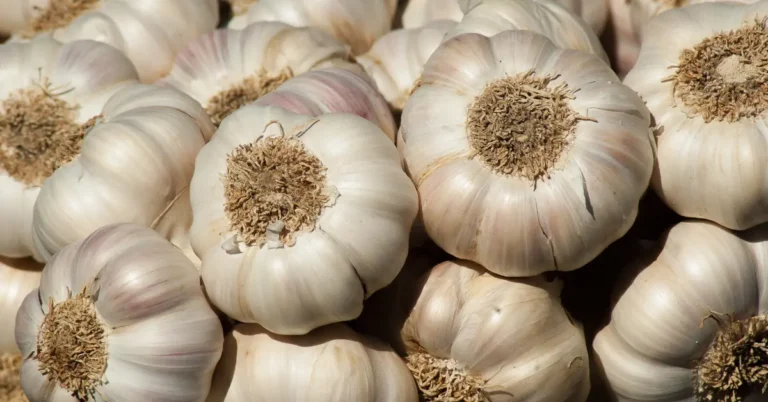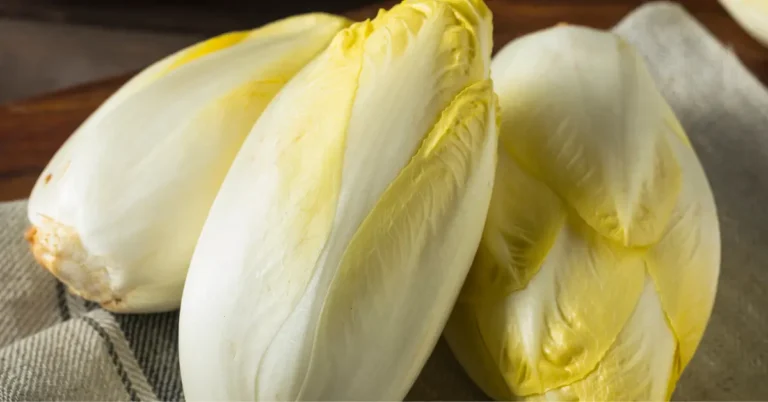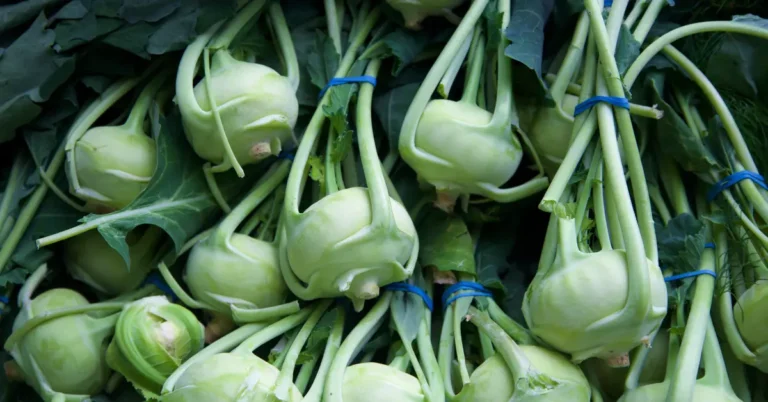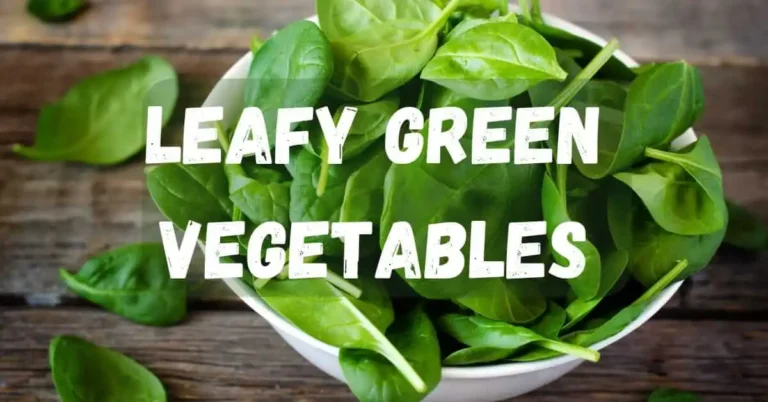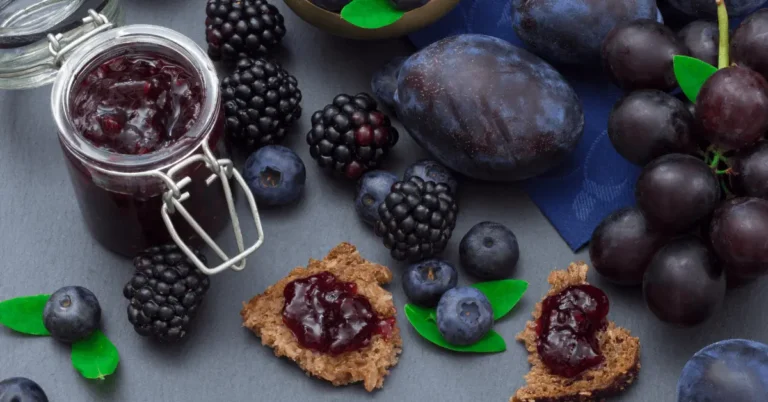World’s 31 Best White Vegetables
We all know that many green vegetables are available, but did you know there are also various white vegetables? Can you name 31 white vegetables? If not, this is the list you are looking for.
White vegetables add elegance to our plates with their variety and often overlooked qualities. Adding these to our meals is beneficial because they are color-neutral and have an earthy taste. Additionally, they contribute to the nutritional value of our food by adding flavor and nutrition.
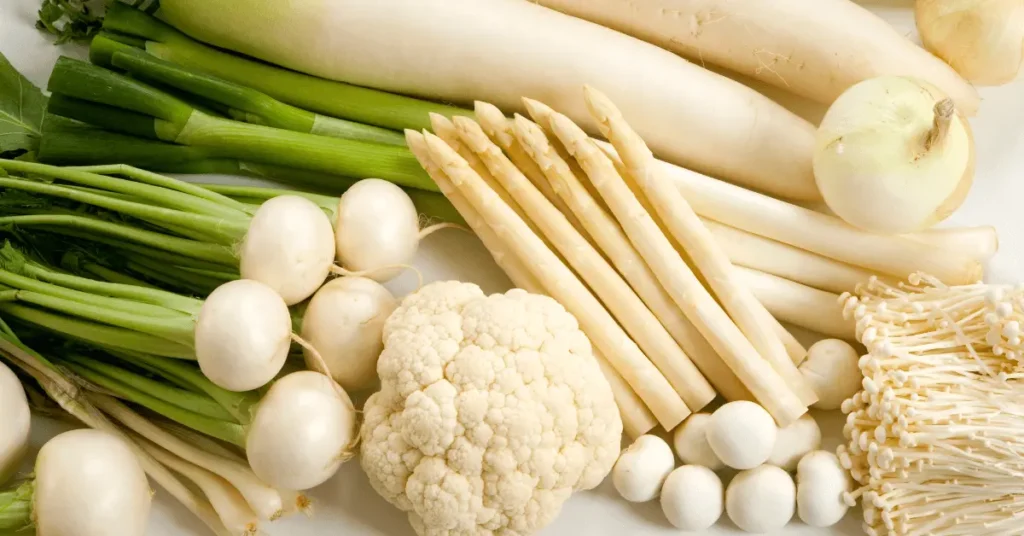
Why are some vegetables white in color?
Vegetables appear white primarily due to the presence of certain pigments and the absence of others. Unlike their colorful counterparts, white vegetables lack significant amounts of chlorophyll and carotenoids, the pigments responsible for green and vibrant hues. Instead, white vegetables often contain pigments known as anthoxanthins. Anthoxanthins are water-soluble pigments that can appear colorless or white in acidic environments. In essence, the color of vegetables is determined by the types and presence of pigments. In the case of white vegetables, the combination of anthoxanthins and the absence of other pigments gives them their distinct coloration.
Why include white vegetables in your diet? White vegetables offer essential nutrients, antioxidants, and dietary fiber, contributing to overall health and well-being.
List Of 31 Best White Vegetables:
In the following list, we have included 31 of the best white vegetables that should be included in your daily diet.
1. Cauliflower:
With its distinctive white florets, Cauliflower is a versatile vegetable that adds flavor and nutrition to various dishes. Easily cultivated in cool climates, it flourishes in well-drained, fertile soil. Rich in vitamin C, it boosts the immune system and aids collagen formation.
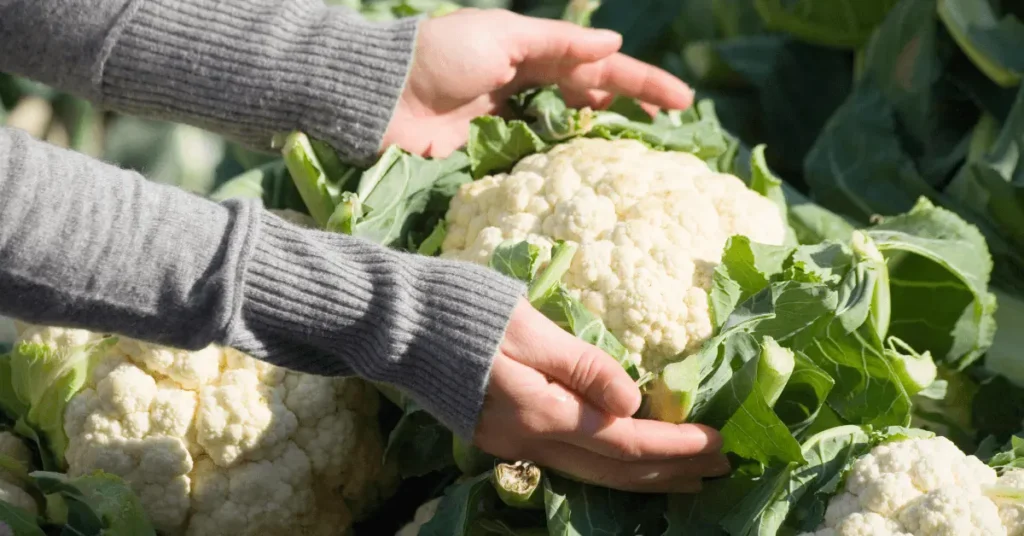
2. Potatoes:
Potatoes, with their starchy goodness, come in various white varieties like Russet and Yukon Gold. The skin of these root vegetables can range from beige to light brown, and they usually have a round to oval shape. Its flesh may be white, yellow, or purple, depending on the variety. From small new potatoes to large baking potatoes, potatoes come in various sizes. Packed with potassium and vitamin C, they support heart health and immune function.

3. Mushrooms:
In the world of cuisine, mushrooms add a distinct taste and texture with their unique appearance and flavor. Mushrooms come in many shapes, sizes, and colors, but the classic white button mushroom is a favorite among many. Cultivated in controlled environments with specific substrate materials, mushrooms require careful humidity control. They boost immunity, support overall health, and are high in B vitamins and antioxidants.
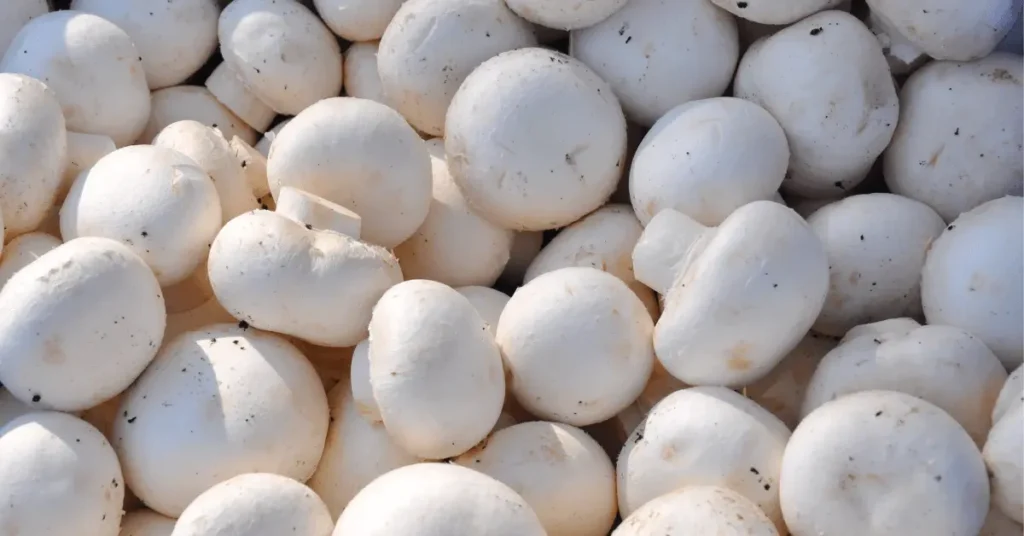
4. Garlic:
Garlic, known for its aromatic bulbs, contains allicin, offering anti-inflammatory properties. It supports immune health and may help lower blood pressure. Planted in well-drained soil, garlic requires a cold period for bulb formation, making it suitable for various climates.
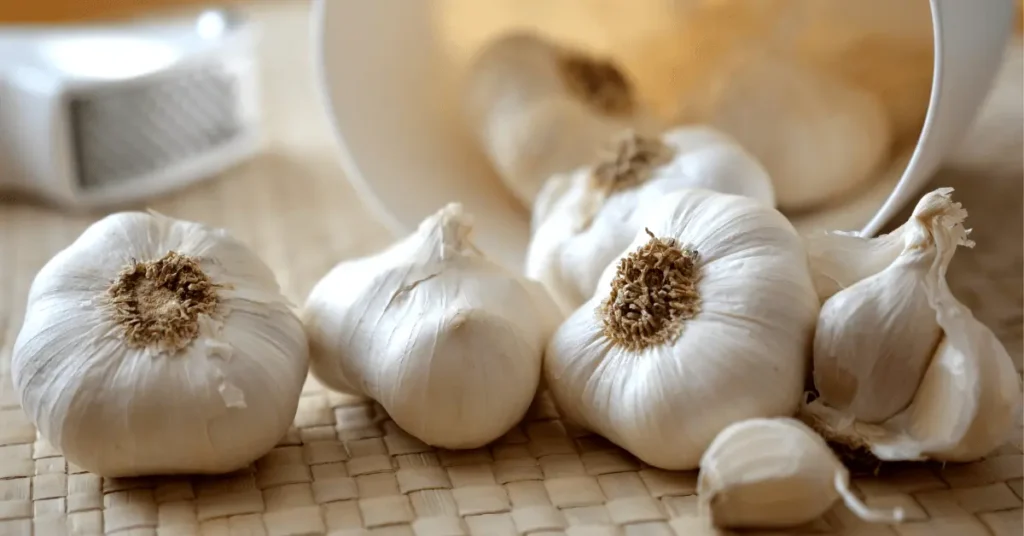
5. Turnips:
With their distinctive round shape and earthy appearance, turnips are root vegetables that uniquely flavor various culinary delights. Turnips are known for their mild, peppery flavor, which adds a pleasant kick to dishes. Rich in vitamin C and manganese, they aid digestion and provide antioxidants. Thriving in well-drained soil with full sunlight, turnips are versatile and suitable for spring and late summer cultivation.
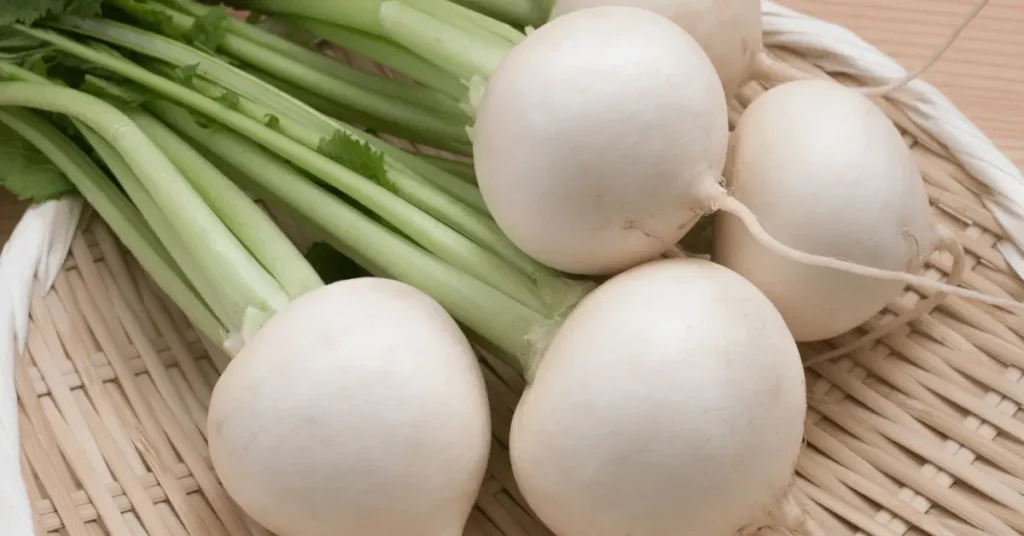
6. Onions:
Adding depth and flavor to various dishes, onions, with their distinctive layers and intense aroma, are culinary essentials. These bulbous vegetables come in multiple colors, including white, yellow, and red, each offering its unique taste profile. In the kitchen, the outer papery layer protects the layers beneath. With their distinct layers, onions are aromatic and rich in antioxidants. They support heart health and may have anti-inflammatory properties. Well-suited for various climates, onions are grown from bulbs in well-drained soil.

7. Kohlrabi:
The bulbous stems of kohlrabi make it a nutrient-dense vegetable high in fiber, vitamin C, and antioxidants. Well-drained soil and cooler temperatures are ideal for growing kohlrabi.
8. Parsnips:
Parsnips, resembling white carrots, offer a sweet and nutty flavor. High in fiber and vitamin C, they contribute to digestive health and immune support. These root vegetables are cultivated in well-drained soil and are suitable for colder climates.
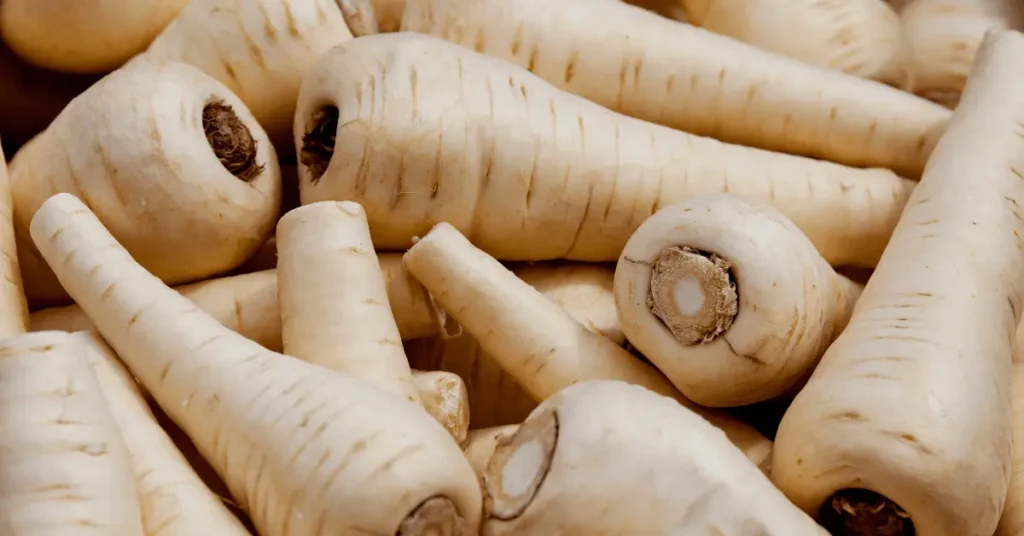
9. Jicama:
It is rich in vitamin C, making Jicama a tropical root vegetable with a crisp texture. It supports skin health through its hydrating properties. Tropics and subtropics are the best places to cultivate them because they thrive in warm climates with sandy, well-drained soil.

10. White Asparagus:
White asparagus, a delicacy, has a milder flavor than its green counterpart. Rich in folate and vitamin K, it supports cell division and bone health. Cultivated in sandy, well-drained soil, white asparagus requires careful harvesting to maintain its color.

11. White Sweet Potato:
The white sweet potato, distinguished by its creamy flesh and mild sweetness, stands out as a nutritional powerhouse among root vegetables. They support eye health with their high beta-carotene content and the fiber aids in digestion. These sweet potatoes also provide a complex carbohydrate source, promoting sustained energy release.

12. Fennel:
In addition to its unique bulbous base and feathery fronds, fennel is an aromatic and flavorful vegetable. The bulb color is usually white or pale green, with a crisp texture and licorice-like taste. Supporting digestion and heart health, fennel is cultivated in well-drained soil with a preference for cooler temperatures. Fennel also contains vitamin C, potassium, and various antioxidants, contributing to overall well-being.
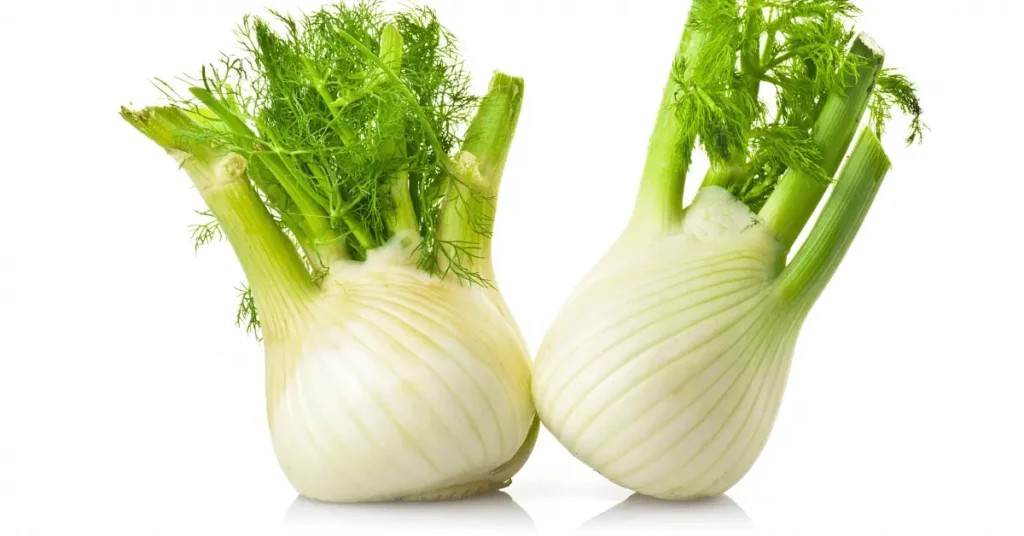
13. Rutabaga:
Rutabaga, resembling a giant turnip, is a root vegetable with a sweet and nutty flavor. With its rough, pale tan exterior and vibrant yellowish-orange flesh, rutabaga stands out in the world of root vegetables. These hearty veggies are packed with nutritional goodness. Ideally, it would grow in well-drained soil in a cooler climate.
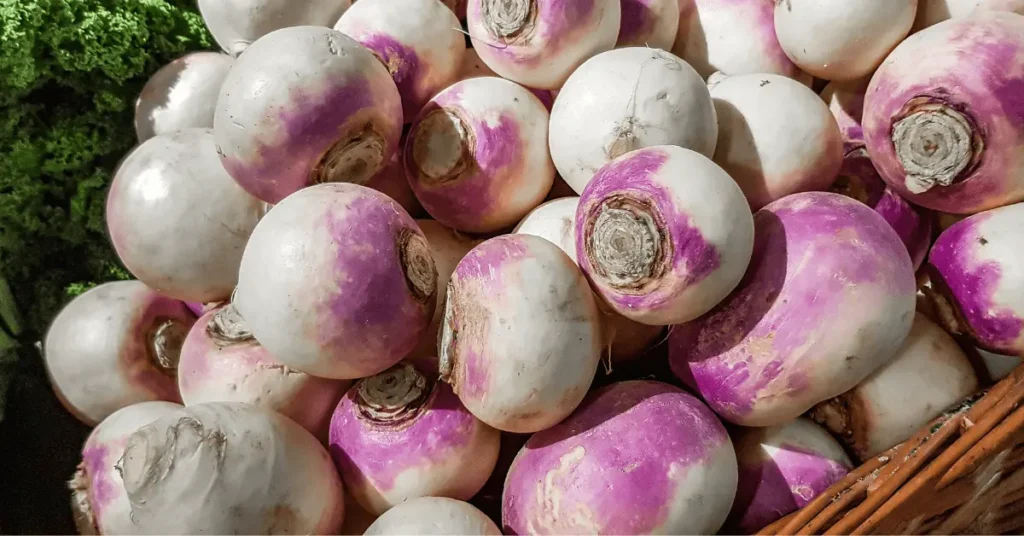
14. Celeriac:
With its knobby appearance, there is no doubt that celeriac is a nutritionally dense root vegetable. Rich in vitamin K and phosphorus supports bone health and energy metabolism. Cultivated in well-drained soil, celeriac prefers cooler temperatures.

15. White Radish:
Radishes, known for their peppery taste, are rich in vitamin C and antioxidants and improve immunity. Their soil must be well-drained, and they can be planted in the spring and fall.
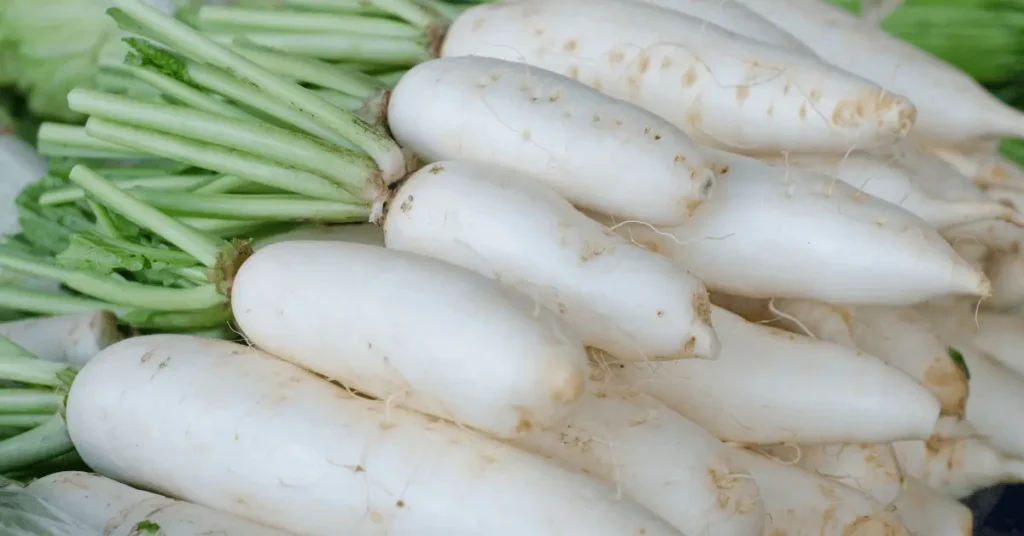
16. Bamboo Shoots:
There are few calories and fiber in bamboo shoots, an Asian staple. Bamboo shoots also improve digestion. The plants grow in tropical and subtropical areas in well-drained soil.

17. White Eggplant:
White eggplants, with their smooth skin, are low-calorie vegetables packed with fiber and antioxidants, promoting digestive health. It is grown in well-drained soil with plenty of sunlight.
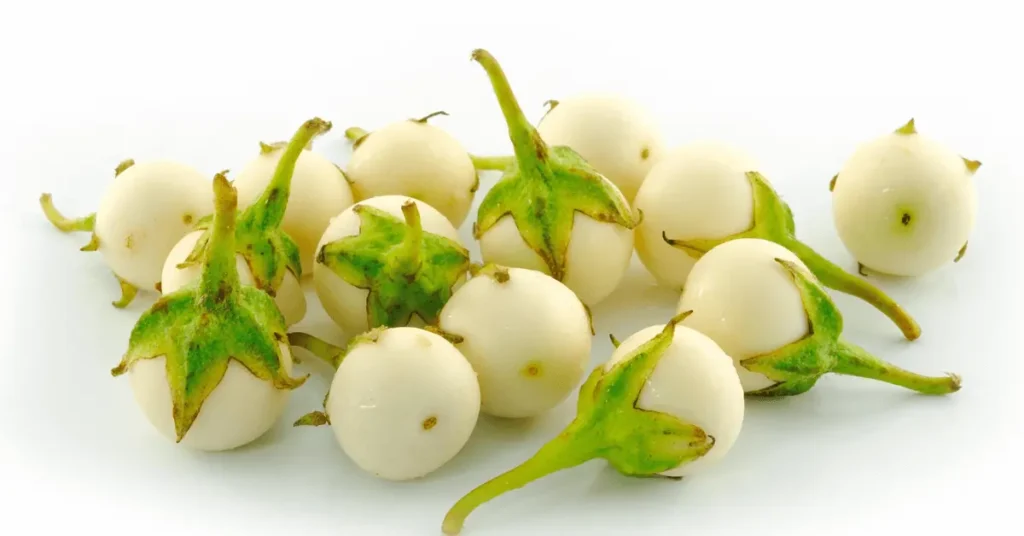
18. White Beans:
White beans are a versatile legume that has high protein and fiber content. A well-drained soil and a warm climate are required for their cultivation. They promote heart health and weight loss.

19. White Onions:
Similar to yellow onions, white onions contain antioxidants and anti-inflammatory properties. Supporting heart health, they are grown from bulbs in well-drained soil.

20. Cabbage:
Cabbage offers many culinary benefits and nutritional benefits. Cabbage is a versatile ingredient that can be prepared in several ways. Its crisp texture and slightly peppery flavor make it an excellent choice for various dishes. In addition to providing dietary fiber, cabbage also promotes digestive health. The vitamins C, K, and B found in cabbage, potassium, and manganese are essential nutrients.
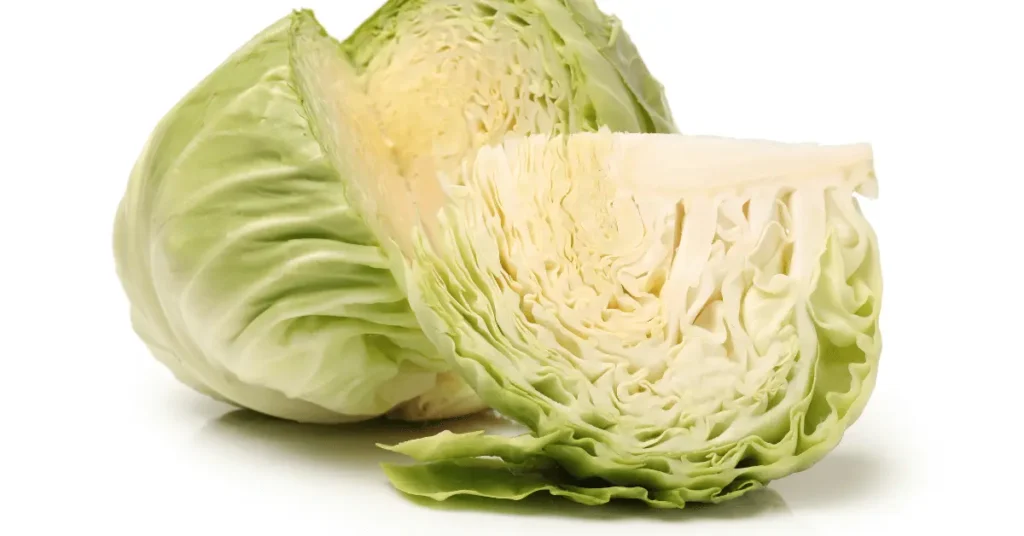
21. Horseradish:
The savory flavor and distinct horseradish heat enhance the flavor of many culinary dishes. Due to its antibacterial properties, horseradish has been used for food preservation for centuries. It contains antioxidants that may help the body combat oxidative stress.
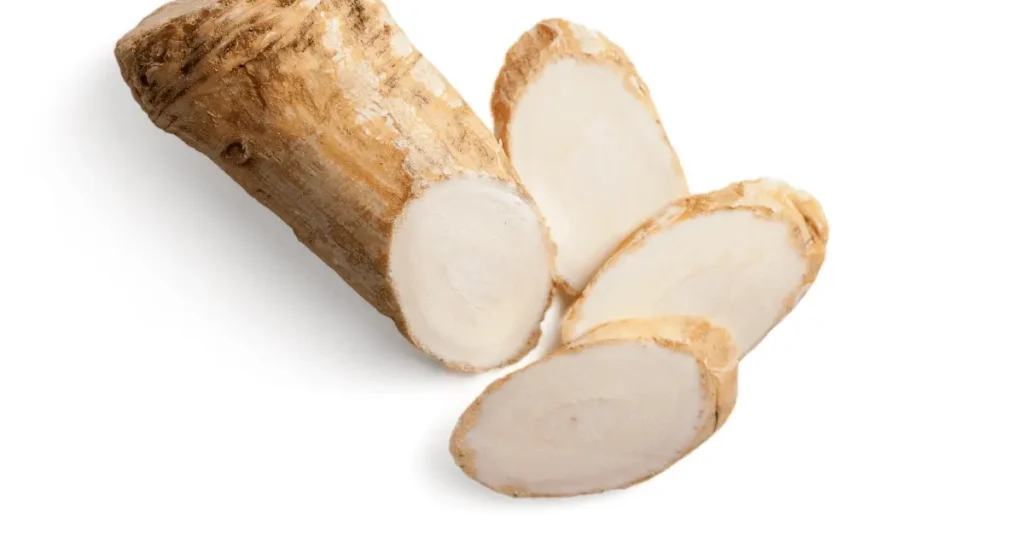
22. White Beets:
A lesser-known variety of beet, the white beet, has a milder taste than its more common counterpart, the red beet. White Beets are rich in fiber and vitamin C, promoting digestion and immunity. Typically grown in cooler climates with well-drained soil.
23. Pattypan Squash:
Pattypan squash, often recognized for its distinctive and scallop-edged shape, is a delightful and versatile summer squash variety. The squash is a good source of dietary fiber, promoting digestive health and supporting a feeling of fullness. With a low-calorie count, pattypan squash is an excellent meal addition for those aiming to manage their calorie intake.

24. White Cucumber:
Cucumbers with white skins, or pale-skinned cucumbers, are refreshing and mild-flavored vegetables similar to green cucumbers. In addition to its crisp texture and subtle taste, it belongs to the gourd family. The high water content of cucumbers contributes to the hydration and cooling of the body. Vitamin K and vitamin C are both found in white cucumbers. In addition, they are rich in minerals like potassium, which contribute to a healthy lifestyle.
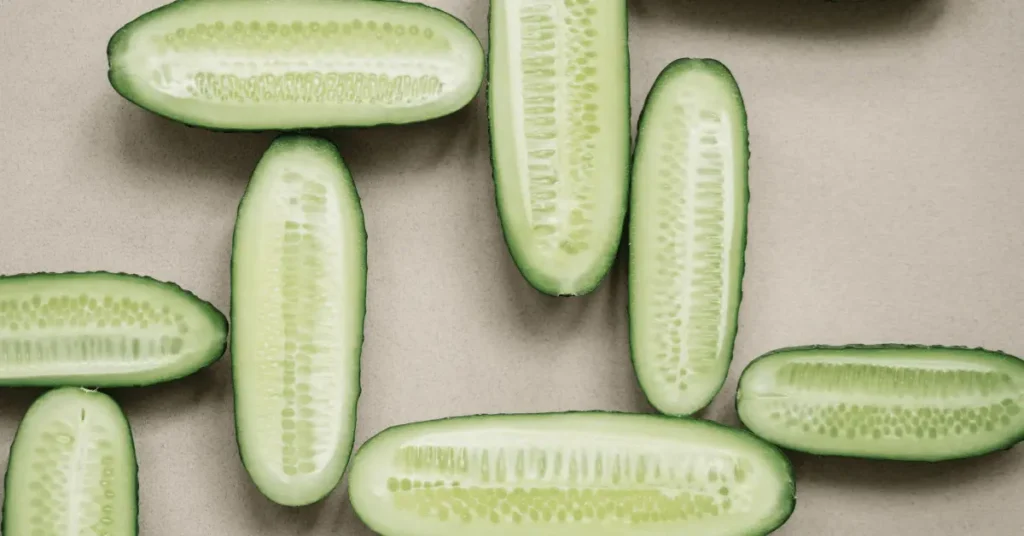
25. Salsify:
Salsify, a unique and lesser-known root vegetable, offers a range of culinary and nutritional benefits. Due to its mild oyster-like flavor, salsify belongs to the daisy family and has long, thin roots. Salsify is relatively low in calories, making it an ideal choice for anyone trying to control their calorie intake. As a good source of dietary fiber, salsify promotes digestive health and makes you feel full.

26. Artichoke:
White artichoke, a unique variety of the thistle family, is renowned for its tender heart and mild, delicate flavor. Unlike the traditional green artichoke, the white type is distinguished by its paler color and subtle taste. It is rich in fiber and antioxidants. It benefits digestive health and is cultivated in well-drained soil with consistent sunlight.
27. White Corn:
White corn, a sweet and tender variety, is a delicious and versatile grain enjoyed in many culinary dishes. Unlike the traditional yellow corn, white corn features pale, milky kernels and a slightly sweeter taste. It is rich in fiber and antioxidants. It benefits digestive health and is cultivated in well-drained soil in warmer climates.
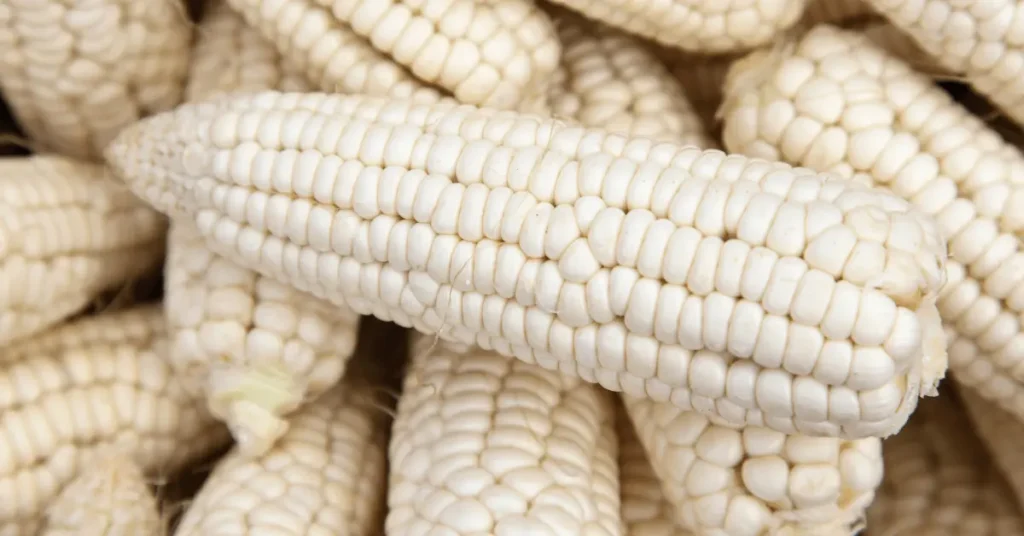
28. White Zucchini:
A mild-flavored variety of summer squash, white zucchini features pale, ivory-colored skin and tender flesh. Farmers cultivate it in well-drained soil in warmer climates, which benefits digestive health while being low in calories and high in hydration.

29. White Pumpkin:
White pumpkins are distinguished by their pale flesh and smooth, ivory-colored skin. The fruit is rich in vitamins, including vitamin A, essential for eye health, and vitamin C, which boosts immunity. White pumpkin’s mild, slightly sweet flavor makes it an excellent ingredient for various culinary dishes.
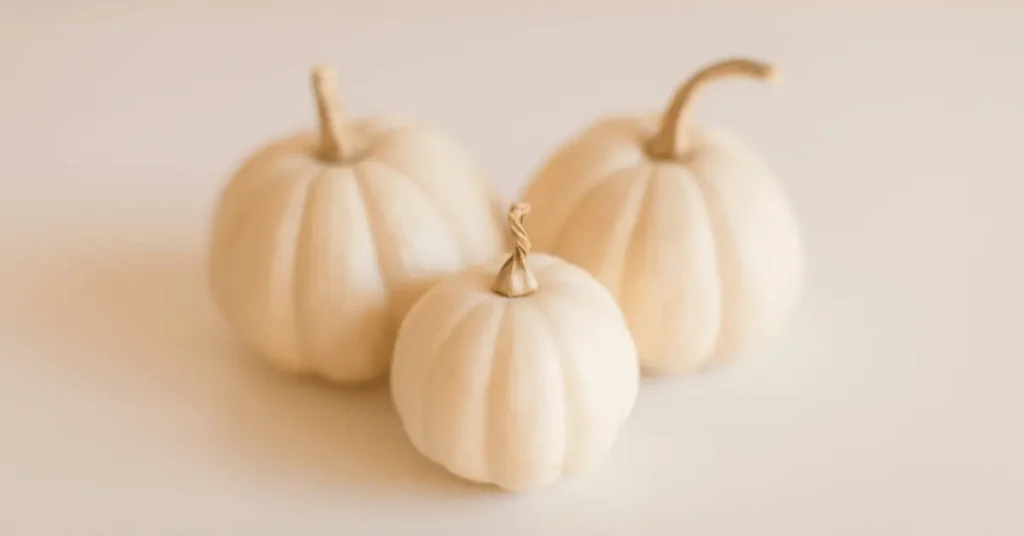
30. White Squash:
White squash, with its various shapes and sizes, is a category of summer squash that includes a diverse range of cultivars. Their pale or creamy-colored skin and tender, mild-flavored flesh characterize these squashes. The various shapes of white squash are low in calories and high in fiber. It is grown in warm climates where the soil is well-drained and promotes digestive health.
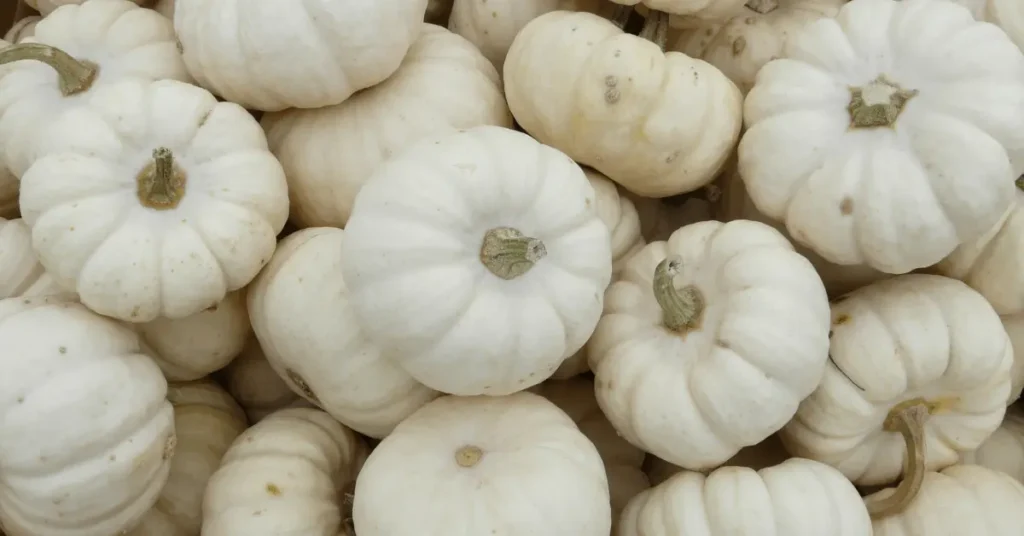
31. White Leeks:
With their mild onion flavor and slender, elongated shape, white leeks are versatile vegetables that add a subtle yet distinctive taste to various dishes. Allium family members have a white cylindrical bulb and long, green leaves. Besides providing vitamin K, they are rich in antioxidants, especially flavonoids. Leeks are also a good source of fiber, which supports digestion.
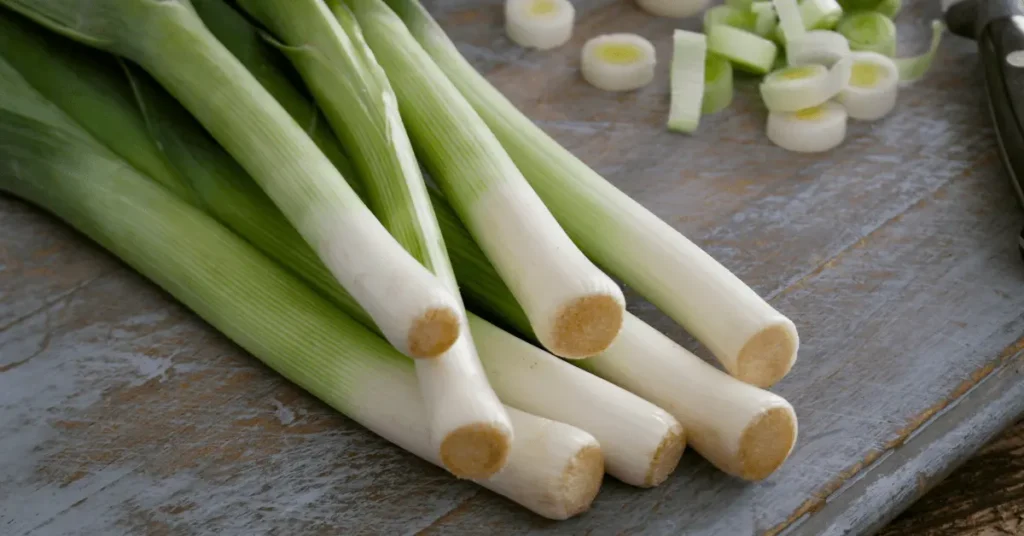
Conclusion:
In conclusion, white vegetables offer diverse options that extend beyond their appealing appearances. From the versatile cauliflower to the subtle sweetness of white sweet potatoes, these vegetables bring flavor and nutrition. They offer a variety of flavors, textures, and health benefits. To preserve their freshness for future use, individuals can freeze white vegetables. This way, you can maintain a balanced and nutritious diet all year.


